Database system is a term that refers to the application of the database into an integrated system and can be applied for the benefit of the user as well as the public interest. The database system will be used to process the data as well as the information contained in the database or database, so that information can be forwarded and also used by anyone who accesses the data. The centralized database system is the opposite of a distributed database system, where in a centralized database system, the server providing information in the database consists of only one server, as the center and also the host computer for the entire system. This type of system has the following deficiencies
- Requires a server computer with a very sophisticated capacity, especially for companies or agencies that have heavy data traffic.
- Large hard drive capacity
- If the server is interrupted, all activities will be interrupted
- Fixes on the server may cause server features to be constrained
Because of these shortcomings many developers are trying to develop a decentralized database system using blockchain. With the implementation of a decentralized database system is expected to add a different user experience from a centralized database system. One service that uses a decentralized database system using blockchain is Cardstack.
Cardstack
Cardstack is an open-source framework and consensus protocol that makes blockchains work for the mass market. Cardstack creates a decentralized software ecosystem that can be deployed across multiple markets such as mobile applications and cloud storage.

Cardstack Concept
- Centering The Internet Around The User
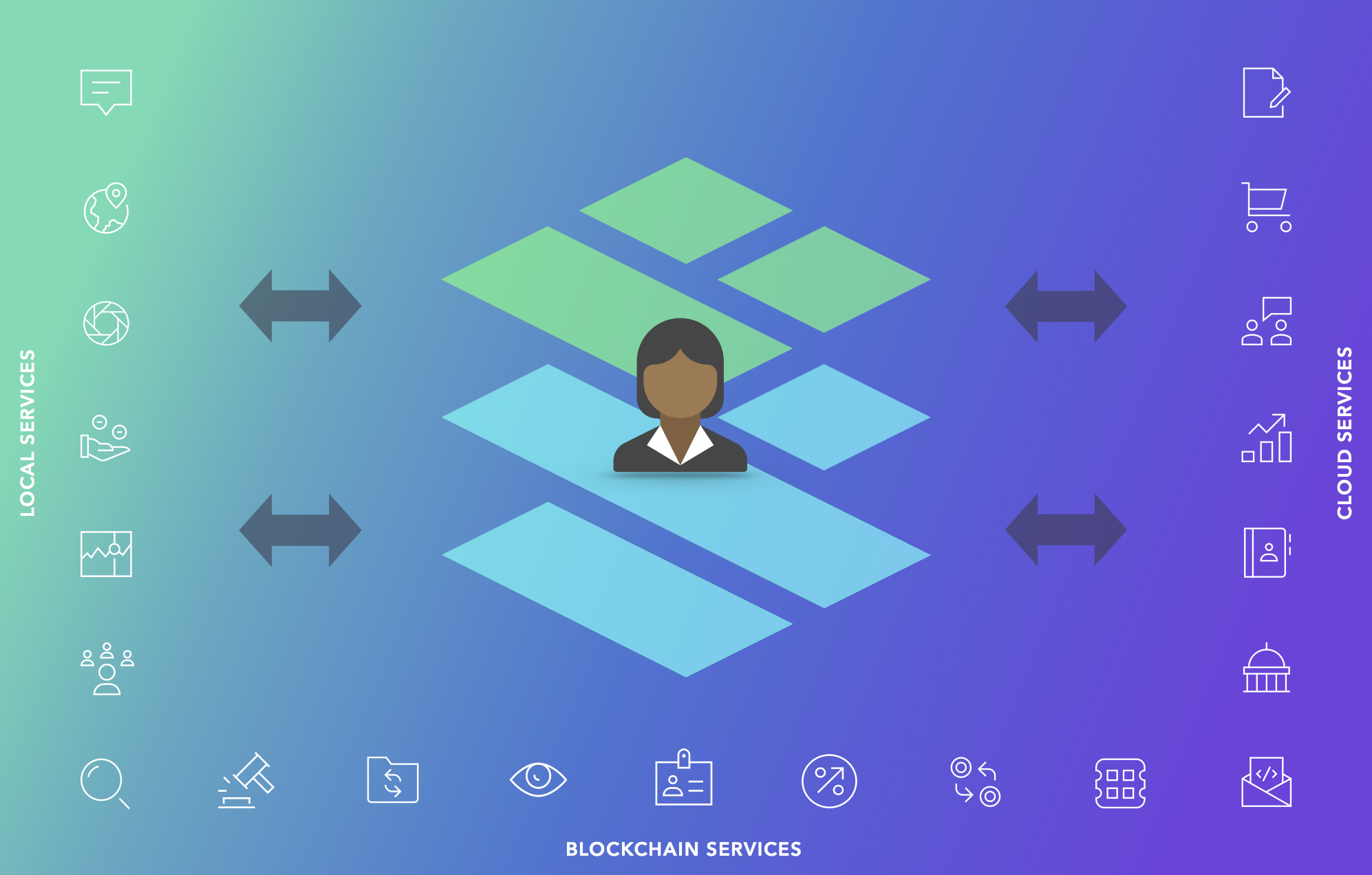
Decentralized User Experiences
Users can start, organize, and make decisions about locally coordinated transactions (ie over the counters) through cloud-based market makers or through logical mechanisms and consensus of multiple barriers. Parity with traditional single-function apps is not enough. The vision of multiple applications and dApps that work harmoniously demands a generation leap in user experience in terms of writing and interoperability.
- Turning Services Into Tangible Cards
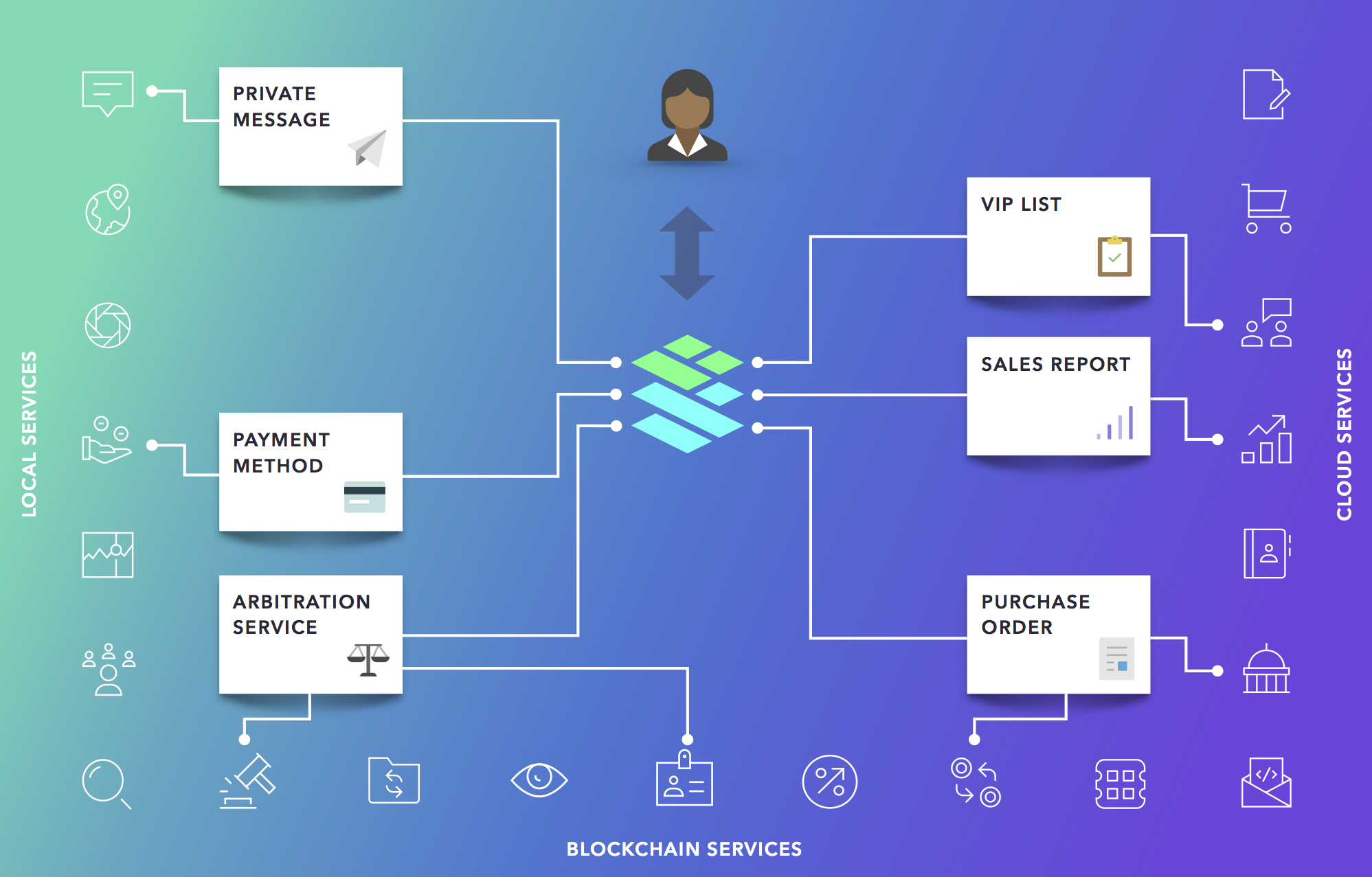
The Rise of Card-based UI
To enable this breakthrough, we need to troubleshoot complex user interface spaces and workflows into manageable sections. Each part is bite-sized, encapsulated, and occurs to look like a physical “card”, which can be embedded, chained, filled automatically, installed, triggered, expanded, diverted, cloned, revoked, and approved as part of the cohesive. At the same time, we also need to minimize and set new rules, know how these cards can stand on their own, be embedded in other applications, and act as hosts for other cards when prompted to do so. We can then use the beneficial power of blockchain, which is simplified through card-based ecosystems, to make features previously offered in exclusive and expensive silos available to millions of people worldwide as bona fide open source software.
- Bridging Blockchain And Cloud Services
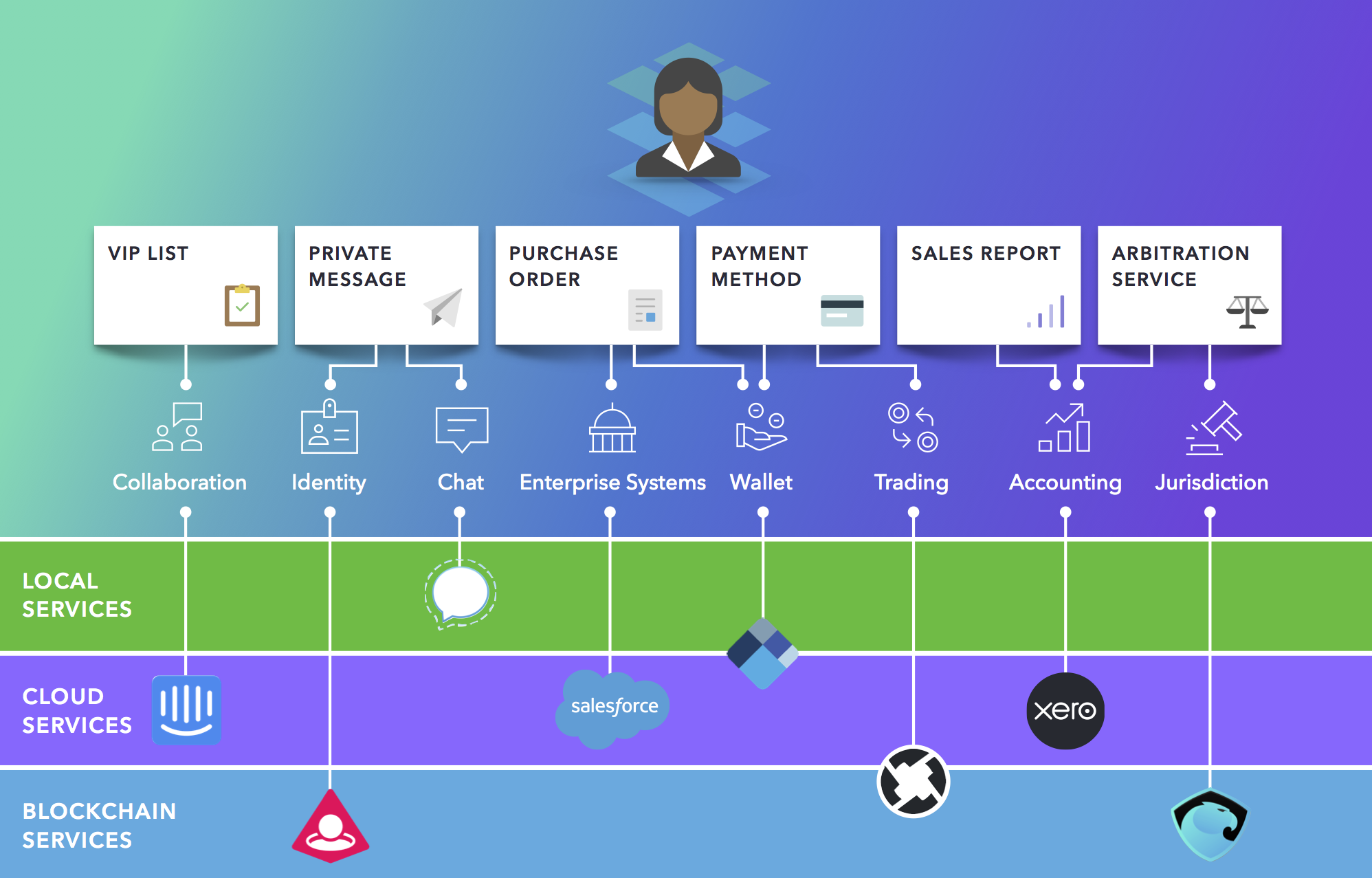
(Un)Chain the Legacy Data
We need to break the ancient concept of the omnipotent “application” into smaller building blocks, which in turn are chained back through user choice or system recommendations. Once you change the data into a card, you have it forever.
With the right syndication latches — some based on blockchain technology — the data in user’s private clouds can be replicated and edited as necessary, to contribute to the collective view in the cloud of other users or organizations. However, blockchain is really a coordinating mechanism between a group of participating peers. Everyone is free to do what they want with data sent by blockchain. Whether you choose to participate directly through a computer you control, instantiate a private cloud that runs 24/7 on your behalf only, or let a third party website do it for you in a multi-tenant way — it’s entirely up to you.
- Enabling Progressive Decentralization
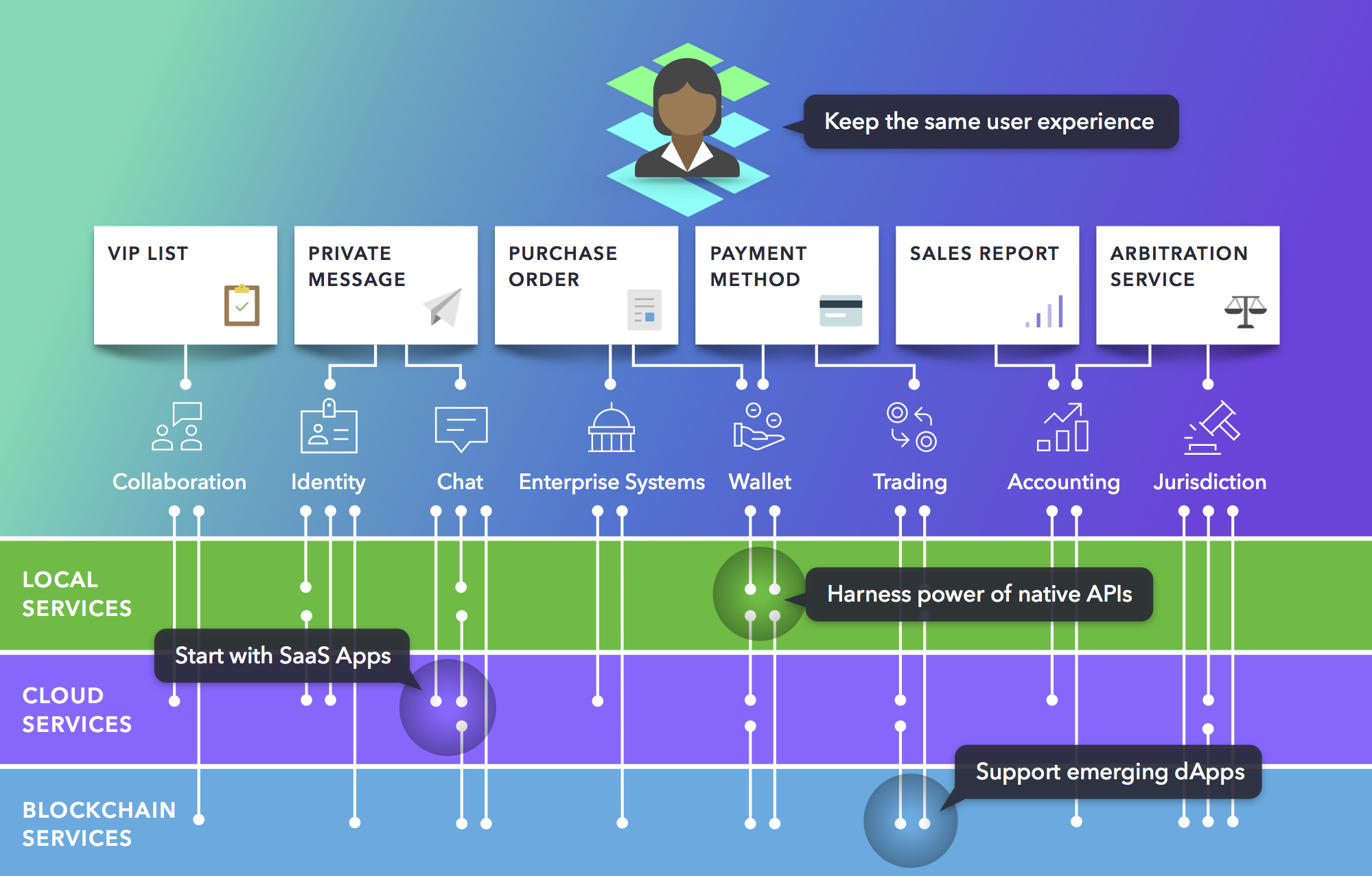
What Users Need To Know
Users need to understand how to interpret the encapsulated information presented to them through this card; they need to choose the right action to take to complete the transaction, persuade others, or grow into greater authority. What they do not need to know is what happens behind this card: whether transactions are sent through cloud-based services or blockchain protocols; whether counterparty is another human or autonomous agent represented by an intelligent contract; or whether the proof of identity and therefore authority is granted by the blockchain ID or face ID on the device.
Technology
Cardstack is a leap forward for blockchain at every layer of the software stack — providing a toolset that unlocks the potential of the decentralized Internet for everyone.
- App Framework
Cardstack Framework is a comprehensive SDK for building powerful, cohesive blockchain apps. At the core is Cardstack Hub, which orchestrates data and value transfer across multiple blockchains and the cloud.
- Aggregation Protocol
Cardstack-powered dApps can tap into the Tally protocol, which gives dApps the power to perform complex computations to organize large networks of users — such as batching payments, counting votes, and rewarding good work.
- Ecosystem Token
Developers can monetize their Cardstack- based apps via the smart contracts powered by the Cardstack Token (CARD), an Ethereum-based ERC20 token designed to fairly reward Cardstack- powered communities.
Features & Benefits Cardstack
- For End-users
- Mix and match multiple dApps and cloud apps
- Create amazing new workflow and app combinations using Cardstack Hub
- Use one token (CARD) that forms retainer agreements with all the services you need
- Keep your data sovereign, or transmit it anywhere easily, with our card-based user experience
- Get started quickly with fiat currency: no crypto expertise required
- For Developers
- Use our comprehensive SDK to build powerful, beautiful, extensible apps
- Access a deep library of powerful drop-in functionality
- Improve your app experience using Cardstack’s off-chain aggregation
- Get paid fairly by our community-run payment and governance algorithm
- Get reimbursed for your material costs
- Keep things 100% open-source
- For Analytic Miners
- Do the useful work of powering community-run algorithms that create a fair distribution of wealth
- Help protect the system against outliers, bad-faith actors, and spam
- Earn fees in the form of Cardstack Tokens that can be held or circulated back into the ecosystem
- Get compensated via a sortition scheme that prevents single parties controlling the reward function
Token Generation Event
Cardstack’s Token Generation Event is designed to balance the interests of multiple stakeholders so as to achieve these goals:
- Optimize the token allocation so that the three main participant groups in the Cardstack ecosystem to end-users, software makers, and analytic miners — have access to the right proportion of tokens at each stage of the growth of the ecosystem to maximize utility.
- Ensure regulatory compliance to all applicable laws and regulations, so the TGE can be conducted in an orderly fashion, as well as to minimize risks for the contributors as well as for the Foundation.
- Reward community members, especially those who joined Cardstack early in its growth phase, with a clear and fair process for participation regardless of the level of individual contributions.
The Cardstack Token (CARD)
- Name: Cardstack Token
- Symbol: CARD
- Token Type: ERC20 on Ethereum
- Jurisdiction: Zug, Switzerland
- Hard cap: $35,000,000 in USD
- Soft cap: $10,000,000 in USD
- Token Created at TGE: 6,000,000,000 CARD
- Token Available for Public at TGE: 2,400,000,000 CARD (40%)
- Bonus for Pre-Allocation: 10%
- KYC/AML: Yes
- TGE Date: Q1 2018 (projected)
- Method of Contribution: ETH
- Whitelisting of Ethereum Address: Required for crowd fundraiser
- Individual Caps: Enforced by smart contract during crowd fundraiser
- Vesting Schedule: Foundation (5 years), Syndicate & Team (4 years), Ecosystem Initiatives (2 years)
- Inflation / Mining Function: Additional 4,000,000,000 tokens distributed over 10 years to bootstrap reward pools for software makers and analytic miners
- Maximum Number of Tokens: 10,000,000,000 CARD in 2028
- Excludes Contributors From: United States, Cuba, Iran, North Korea
For more information about Cardstack, you can visit links below :
=========================================
Website : https://cardstack.com/
Whitepaper : https://cardstack.com/whitepaper.pdf
ANN Thread : https://bitcointalk.org/index.php?topic=2768237.0
Facebook : https://www.facebook.com/cardstackproject
Twitter : https://twitter.com/cardstack
Telegram : https://telegram.me/cardstack
=========================================
Username Bitcointalk : dhavid19
Bitcointalk Profile https://bitcointalk.org/index.php?action=profile;u=1795848
ETH Address : 0x2e0aE95a7871c8A38A513981904410d07DD96231
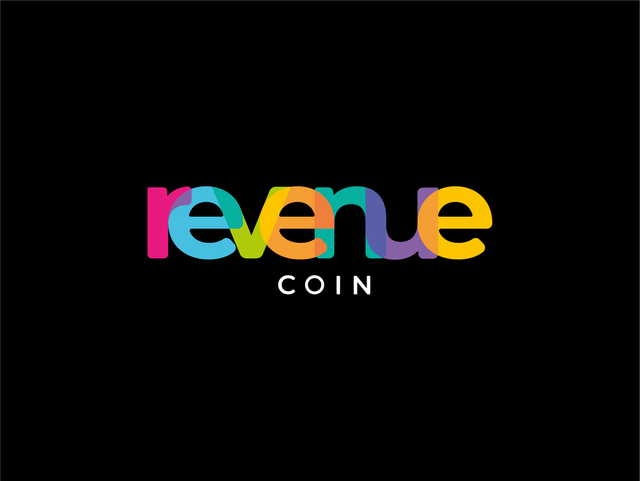
No comments:
Post a Comment